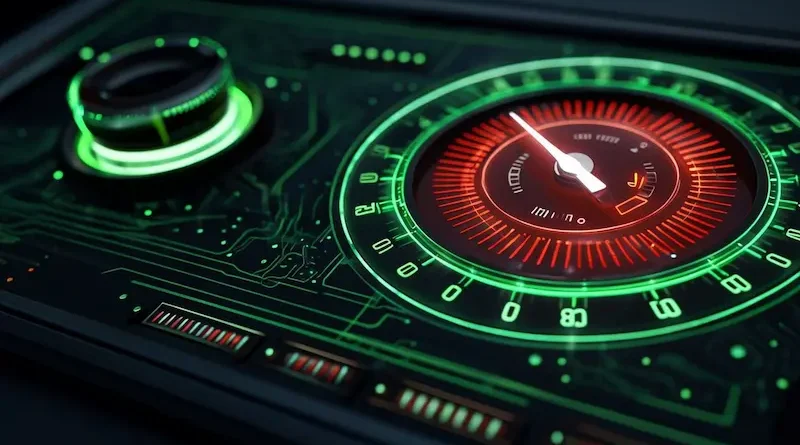Calibration, or “kalibraatio” in Finnish, is a fundamental process in many industries. Whether you’re ensuring that a manufacturing line produces uniform products or fine-tuning a camera for sharper images, calibration is the invisible force driving accuracy and reliability. But what exactly is calibration, why does it matter, and how is it applied in different contexts? This blog dives into the fascinating world of calibration, breaking down its purpose, importance, and applications.
What Is Calibration?
Calibration is the process of comparing a measurement device or system against a known standards reference to ensure accuracy. It determines any deviation in the device’s performance and adjusts it to align with the reference standard.
For example, when you calibrate a weighing scale, you compare its output against a precise reference weight to confirm it reports the correct mass. If your scale shows discrepancies—such as reading “1.02 kg” for a 1 kg object—it’s adjusted until the error disappears.
This can cause errors that compromise quality, safety, or effectiveness in various fields.
Why Is Calibration Crucial?
Calibration has far-reaching implications across both everyday tools and cutting-edge technologies. Here’s why it’s vital:
- Accuracy and Reliability: Measurements need to be correct—whether you’re baking bread with a digital scale or programming machinery for micrometer-level tolerances. Calibration ensures data is trustworthy.
- Safety: Imagine if an industrial pressure gauge failed to show accurate readings, leading to an operational hazard. Regular calibration reduces such risks.
- Regulatory Compliance: Many industries, such as healthcare and aviation, have strict standards requiring calibrated equipment to ensure reliability.
- Efficiency: Accurately calibrated devices reduce waste, improve repeatability, and enhance overall performance.
Fields Where Calibration Matters
Calibration is important in areas where precision is key. Some notable fields include:
1. Science and Research
Scientific experiments often depend on highly precise instruments, such as thermometers, spectrophotometers, or pressure sensors. Calibration confirms that researchers can trust their data and reproduce experiments accurately. A small drift in measurement can render months of research invalid, highlighting the need for routine calibration.
2. Manufacturing and Engineering
Calibration plays a pivotal role in industries like automotive, aerospace, and consumer electronics. Imagine a robot arm assembling smartphones—if the machinery isn’t calibrated, it could misalign pieces or produce defective units.
Similarly, construction equipment, such as laser levels or torque wrenches, must maintain precision to deliver consistent results.
3. Photography and Videography
Cameras rely on precise color balancing, focus mechanisms, and exposure adjustments. Professional photographers often calibrate their equipment, such as lenses and monitors, to eliminate color shifts, focus inaccuracies, or brightness inconsistencies. This is especially important for filmmakers and visual artists, where precision impacts creative output.
4. Healthcare
Medical equipment, ranging from thermometers to MRI scanners, demands consistent calibration. A small deviation in a blood pressure monitor, for instance, could lead to incorrect diagnoses. Healthcare professionals rely on meticulously calibrated devices to protect and save lives.
5. Everyday Consumer Tools
Even at home, calibration touches everyday life. Have you set up a new TV and adjusted the brightness or colors? That’s a form of manual calibration. Smart thermostats, fitness trackers, and even gaming controllers rely on calibrated components to work as expected.
How Is Calibration Performed?
Despite differences, most procedures follow these general steps:
Step 1: Compare Against a Known Standard
The device is tested against a reference standard. For example, a scale might be tested using pre-certified weights, or a thermometer might be compared to a controlled temperature bath.
Step 2: Identify and Measure Deviations
If there’s a discrepancy between the reference and the device’s readings, the difference is noted. This identifies the amount of adjustment required for accurate performance.
Step 3: Adjust or Document Measurements
Some devices allow physical adjustments to eliminate errors. For instance, adjusting a dial on a pressure gauge or updating firmware in modern electronic devices. If adjustments aren’t possible, deviation records are used instead.
Step 4: Document Changes
Calibration reports detail the equipment’s state, adjustments made, and its performance after calibration. These documents are essential for audits and compliance in many industries.
Examples of Calibration Processes
1. Calibrating a Camera
Photographers often use calibration tools, such as color charts or lens calibration targets. For example, to ensure accurate focus, they may test autofocus using grids and adjust the lens accordingly. Similarly, color calibration tools ensure that a monitor displays realistic colors, reducing the risk of edits appearing inconsistent when printed or published.
2. Calibrating Industrial Machinery
Consider an industrial punch press, which needs to cut metal sheets with extreme accuracy. Calibration involves measuring tolerances, testing cutting pressure, and ensuring the machine maintains the specified standards under operational conditions.
3. Calibrating Scales
Calibrating a weighing scale at home or in a lab involves placing certified weights on the scale and observing whether the readings match. If necessary, internal weight settings are fine-tuned or reset.
4. Calibrating Medical Devices
A blood pressure monitor is calibrated using a calibration cuff with known pressure intervals. Deviations are corrected either via software adjustments or mechanical recalibrations.
When Should You Calibrate Equipment?
Here are a few scenarios that call for calibration:
- Before and after critical measurements
- Following repairs or adjustments
- When equipment undergoes a change in environment (e.g., moving from a humid to a dry climate)
- At regular intervals set by industry standards
Final Thoughts
From fine-tuning cameras to ensuring lifesaving medical equipment functions flawlessly, calibration safeguards accuracy and reliability in our increasingly technology-dependent world.
Paying attention to the calibration process not only extends equipment life but also guarantees superior performance, making it a worthy investment for professionals and everyday users alike.
What You Can Do Next
If you’re managing equipment that requires calibration, consider these action steps:
- Check your devices’ calibration schedules.
- Research or hire professional calibration services for complex machinery.
- Invest in calibration tools for easier maintenance.
Precision matters—and with proper calibration, you can ensure your devices perform exactly as they should.

